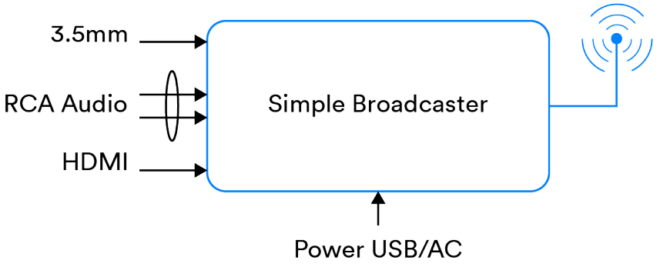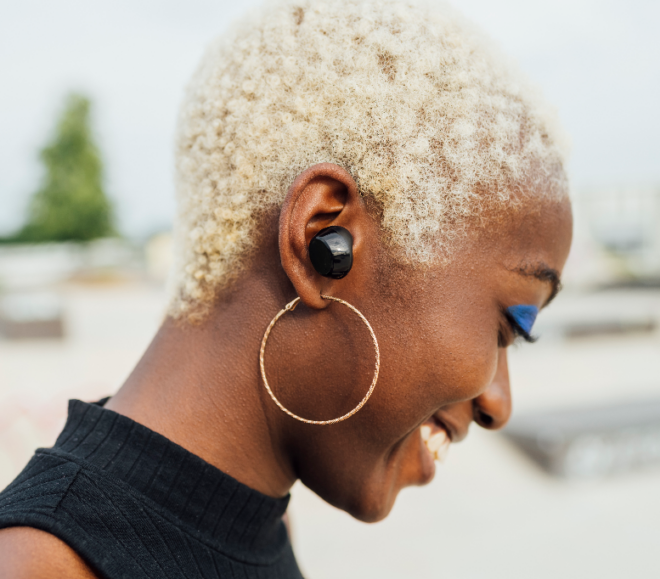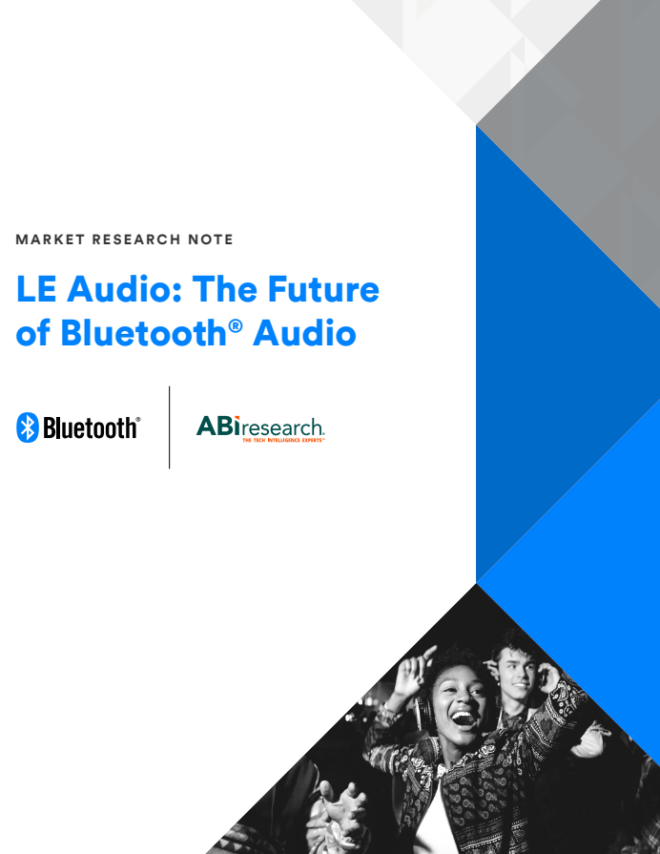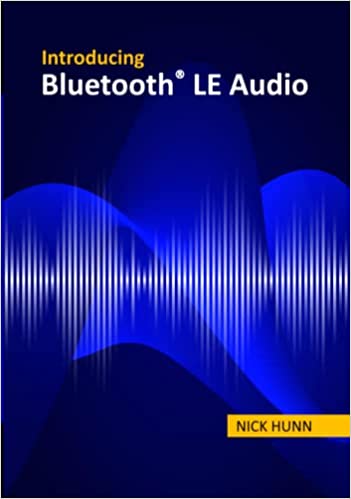In an industry where innovation and accessibility intertwine, Panasonic has emerged as a pioneering force with their LE Audio solution for the hearing impaired. I had the opportunity to speak with Mr. Shigekiyo Fujii, a general manager of Hearing Instruments Products Department, Beauty and Personal Care Business Division, Living Appliances and Solutions Company at Panasonic Corporation to discuss the transformative potential of Bluetooth LE Audio and the pivotal role of Bluetooth® technology will play in the future of the audio industry.
Q&A With Mr. Shigekiyo Fujii From Panasonic
What has been your involvement in the development of this Bluetooth LE Audio solution?
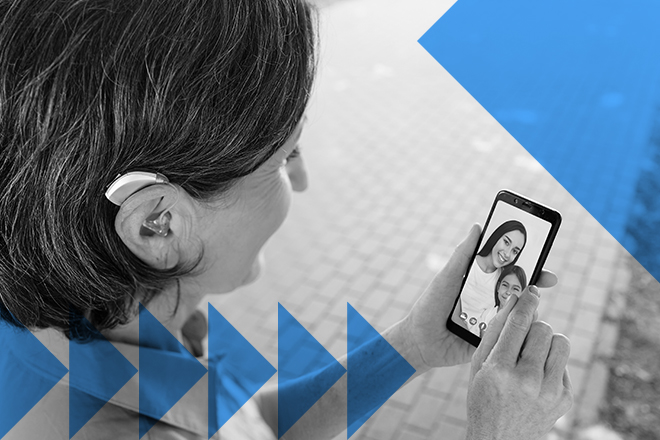
We developed Panasonic’s R5 series of behind-the-ear hearing aids and television transmitters. The transmitter sends stereo audio via LE Audio, enabling clearer wireless audio reception from televisions to hearing aids. Since multiple hearing aids can be connected to a single transmitter, families using multiple devices can adjust the volume and quality of sound to suit each user.
In terms of productization, we collaborated with wireless IC manufacturers to develop the firmware. Our main focus was on practicality, as Bluetooth LE Audio equipped hearing aids need to be able to simultaneously connect to and switch between not only transmitters built into televisions but also other wireless devices such as remote controllers and smartphones.
In order to be compatible with future Auracast™ solutions offered in public spaces, we plan to validate interoperability and provide firmware updates as necessary. We recognize the importance of coordination between infrastructure providers, applications, and equipment for the implementation of Auracast™ solutions in public facilities, thus evaluating and addressing challenges from both infrastructure and equipment perspectives for wide implementation.
What challenges are consumers currently experiencing with hearing aids, and how will Auracast™ broadcast audio address those challenges?
According to the Japan Hearing Aid Manufacturers Association (JHIMA)’s JapanTrak 2022, 35 percent of users report dissatisfaction with hearing aids in large venues such as theaters or concert halls, 26 percent while watching television, and 25 percent in both movie theaters and during phone calls. Traditional hearing aids’ built-in microphones have limits to the sounds they can receive, resulting in difficulties when sound sources are distant and in cacophonous environments.
Examples include announcements in trains and on station platforms, as well as listening to audio in classrooms or public facilities, where even individuals with all levels of hearing health may find it challenging to hear important information. Auracast™ broadcast audio offers the expectation that hearing aid wearers can hear more clearly without being affected by distance or surrounding noise.
![]()
MARKET RESEARCH
LE Audio: The Future of Bluetooth® Audio
Get new forecasts about when and which audio devices will adopt Auracast™ broadcast audio, along with predictions for when public locations will deploy this new Bluetooth capability to enable new audio use cases in their venues.
What has been the reaction of people who have experienced Bluetooth LE Audio?
Some of the feedback we have received includes:
-
- TVs can be heard clearly. When output is being received simultaneously with the TV’s built-in speakers, family members can enjoy listening at just the right volume, reducing complaints about loudness.
- Spouses, for example, are looking forward to being able to watch TV together via a single transmitter, each at their own preferred volume.
- Battery life lasts longer, allowing for uninterrupted use throughout the day, even while watching TV.
- Users anticipate feeling safer when Auracast™ is implemented in transportation and public facilities.
- There is a desire for future expansion of supported models and widespread adoption of Auracast™ compatible equipment.
Why did you choose to adopt Bluetooth LE Audio?

The main reason is the high versatility that enables low power consumption and low latency for audio transmission, making it widely integrated into everyday devices like smartphones and wireless earphones. Hearing aids are required to be small and useable for over ten hours a day with many seniors spending extended periods of time watching TV. Given these conditions, hearing aid batteries typically have capacities of 20-30mAh, requiring a consumption current of around 2mA during wireless use.
Among Bluetooth® technologies, traditional Bluetooth Classic Audio is nearly ubiquitous in smartphones and cell phones, but its high power consumption (resulting in approximately half the operating time) makes it less suitable for hearing aids operating on small batteries. Conversely, while Bluetooth Low Energy (LE) offers lower power consumption, the lack of standardized audio transmission methods led to interoperability challenges due to various OS and hearing aid manufacturers using proprietary standards. With the standardization of Bluetooth LE Audio, we have the ideal opportunity to provide a more comfortable living experience for hearing aid users by improving interoperability.
What role do you think Bluetooth technology will play in the future of audio technology as a whole?
In the field of hearing compensation for hearing aids and cochlear implants, priorities have shifted from the standalone benefit of compensating for hearing loss via the device itself to enhanced comfort and peace of mind through network-enabled functionality, emphasizing the value of connectivity. For example, features such as phone call functionality via smartphones, location notification in case of device loss through applications, and alerting family members in case of falls are becoming increasingly important. These new customer demands, including the provision of a comfortable living space through Auracast™ broadcast audio adoption, make Bluetooth technology essential.
Beyond audio, we believe that Bluetooth® technology will be indispensable in the future for providing value through connectivity, such as home appliance integration and in-car connectivity via smartphones, as well as for health monitoring and care. Within this context, we anticipate further technological advancements in Bluetooth technology, such as reduced power consumption, improved location estimation, and additional power transmission capabilities.

FEATURED INNOVATION
Auracast™ Broadcast Audio
Auracast™ broadcast audio will deliver life-changing audio experiences that will enhance the way you engage with others and the world around you.
イノベーションとアクセシビリティが一体となって発展を続ける補聴器業界において、パナソニックは、Auracast™ ブロードキャスト オーディオが持つ聴覚補助機能を活用した先駆的な存在となっています。この度、パナソニック株式会社 くらしアプライアンス社 ビューティ・パーソナルケア事業部 補聴器商品部 部長 藤井 成清氏に、Auracast™の革新的な可能性を活用した製品開発と実装、またオーディオ業界の未来に向け、Bluetooth®技術が果たす極めて重要な役割についてお話を伺いました。
パナソニック株式会社 くらしアプライアンス社 ビューティ・パーソナルケア事業部 補聴器商品部 部長 藤井 成清氏とのQ&A
Q: 御社のAuracast™ ブロードキャスト オーディオソリューションの開発にはどのような形で関わられましたか?
パナソニックブランドの耳かけ型補聴器R5シリーズとテレビ用送信機を開発しました。テレビ用送信機からAuracast™ ブロードキャスト オーディオでステレオ音声を送信し、補聴器で受信することにより、テレビの音を無線でよりクリアに聞くことができます。一台の送信機から多数の補聴器に送信できるため、ご家族で複数台の補聴器を使用される場合も、各ユーザの聞こえに適した音量・音質で音を聞くことができます。
商品化においては、無線ICメーカとファームウェアを共同開発しました。Auracast™対応の補聴器は、リモコンやスマートフォンアプリケーションなどテレビ用送信機以外の無線機器とも同時接続や切替えを行う必要があるため、実使用に適したファームウェア構築が主な開発要素でした。公共施設など、将来的なAuracast™ ソリューション対応に関しては、相互接続性を検証しながら、必要に応じて補聴器側のファームウェアアップデートを行うことを計画しています。公共施設などのインフラ導入側とアプリケーション・機器側の対応連携が重要と考え、設備と機器の両面から課題出しと実証評価を行って社会実装することを検討しています。
Q: 補聴器の利用者が現在抱えている課題にはどのようなものがありますか?また、Auracast™ ブロードキャスト オーディオはそれらの課題をどのように解決できるでしょうか?
所有している補聴器の聞き取り状況に関して、不満を持つユーザーの割合は、劇場やコンサートホールなどの大きな会場が35%、テレビ鑑賞が26%、映画館、電話がそれぞれ25%、となっています。(出典:一般社団法人 日本補聴器工業会 JapanTrak 2022)
従来の補聴器本体のマイクロホンでは集音に限界があり、離れた音源からの音声の聞き取りにくさ、騒音下での音声の聞き取りにくさなど課題があります。実例として、電車内や駅ホームでのアナウンス、教室や公共施設での音声聴取など、あらゆる聴覚レベルの人にとって聞き取りが難しい環境が多くあります。Auracast™ ブロードキャスト オーディオにより、音源からの距離や周囲の騒音の影響を受けずに、補聴器装用者が聞きたい音をよりクリアに聞けることが期待できます。
Q: Auracast™ ブロードキャスト オーディオについて、実際に使用・体験した人々の反応はどのようなものでしたか?
リリース後、市場から下記のフィードバックがありました。
・テレビの音がよりクリアに聞こえる。テレビの内蔵スピーカと同時出力すると、家族はスピーカからちょうど良い音量で聞くことができ、音がうるさいと言われなくなった
・1台の送信器でも、夫婦揃って自分が聞き取りやすい音でテレビを観られるのが楽しみ
・充電池の持続時間が長持ち、テレビを観ても継ぎ足し充電無しで安心して1日中使える
・交通機関や公共施設に導入されれば、より安心して出かけられると期待している
今後の対応機種拡大やAuracast™ ブロードキャスト オーディオ対応設備の普及が望まれています。
Q: Bluetooth LE Audioを選択された背景にはどのような理由がありますか?
低消費電力、低遅延で音声伝送できる無線技術で、スマートフォンやワイヤレスイヤホンなど身近な機器に搭載されて汎用性が高い点が主な理由です。補聴器は小型かつ1日10時間以上の使用が求められ、テレビを長時間観るシニア層も多い状況です。そのような中、補聴器で使用されている充電池容量は20~30mAhが多く、無線使用時の消費電流は2mA程度に抑える必要があります。
Bluetooth®︎技術の中でも、従来のBluetooth Classic Audioは、ほぼすべてのスマートフォン、携帯電話に搭載されていますが、消費電力が大きいため(動作時間が約半分)、小型電池で動作する補聴器にはあまり適していませんでした。一方、通常のBluetooth Low Energy(LE)は、電力は低いものの、音声伝送方式が標準化されておらず、各OS、各補聴器メーカが独自規格を用いた結果、相互接続性に課題がありました。音声伝送に適したBluetooth LE Audioが規格化され、相互接続性の面でも補聴器ユーザにとってより快適な暮らしに近づくため採用いたしました。
Q: オーディオ技術全体の未来に対しBluetooth技術が果たす役割について、どのようにお考えですか?
補聴器や人工内耳の聴覚補償分野では、本体の中で補聴処理して聞こえを補償する単体の価値から、ネットワークを介した機能拡張による快適性や安心感向上など、つながる価値に変化しています。例えば、スマートフォンによる通話機能、アプリケーションによる落下紛失時の場所通知機能、転倒検知時に家族に知らせる機能などです。Auracast™ ブロードキャスト オーディオ普及による快適な生活空間提供を含め、これらの顧客が持つ新しい需要はBluetooth®技術を必須技術としています。
オーディオ分野にとどまらず、スマートフォンをハブとした家電連携や車載連携、あるいは健康管理・見守りなど、つながることで提供できる価値においてBluetooth技術は将来的にも必要不可欠な通信技術と考えます。その中で、Bluetooth技術には、さらなる低消費電力化、位置情報の推定、電力伝送の付加など技術的な進化を期待しております。

![20240208 GN LONDON 04 LARA 0964 Edit copy[1]](https://www.bluetooth.com/wp-content/uploads/2024/04/20240208_GN_LONDON_04_LARA_0964-Edit-copy1.jpg)
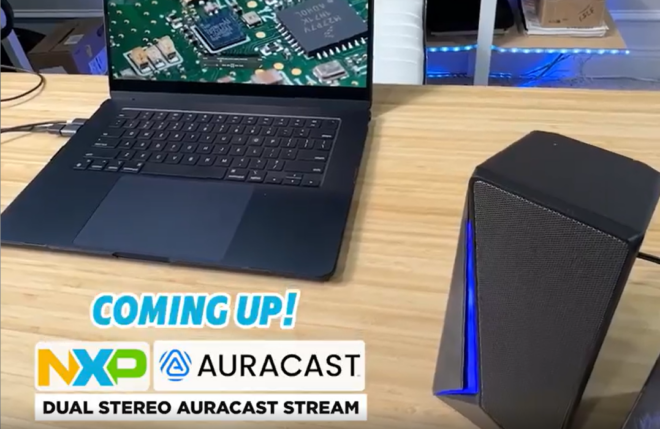
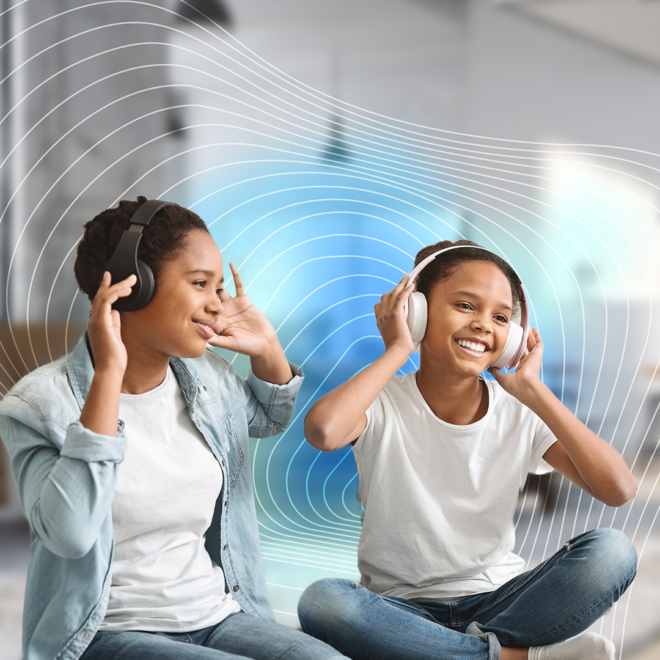
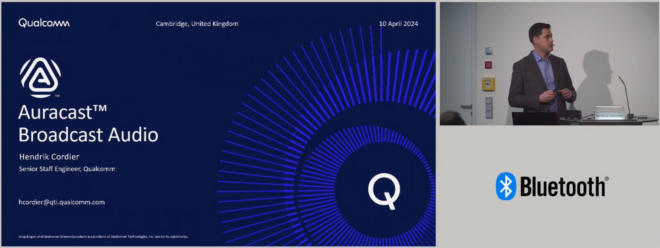



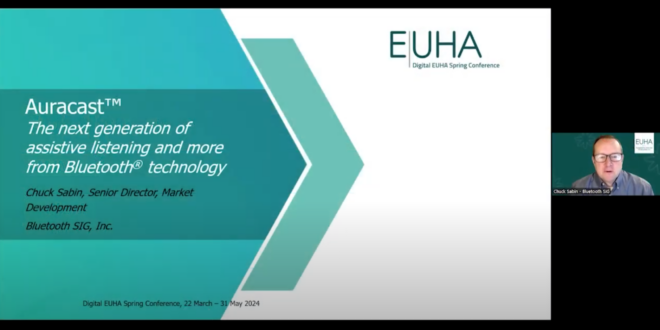
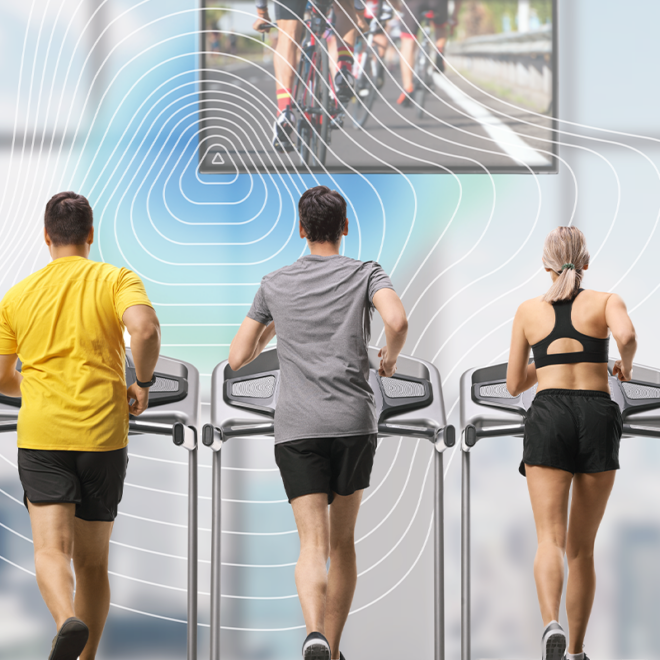
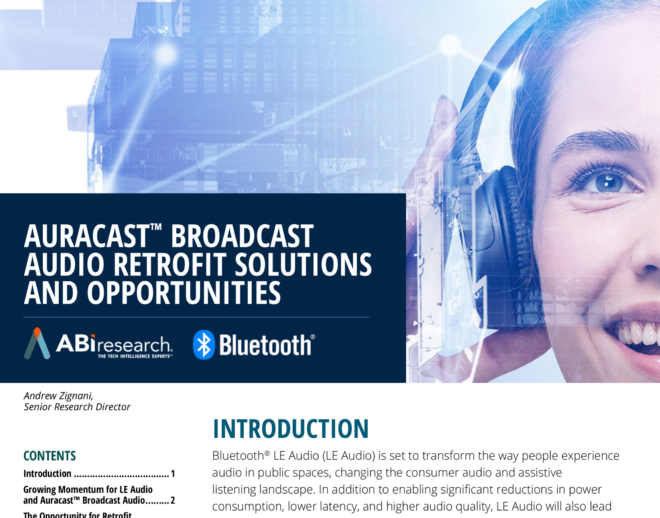
![packetcraft logo tagline[1]](https://www.bluetooth.com/wp-content/uploads/2024/03/packetcraft_logo_tagline1.png)
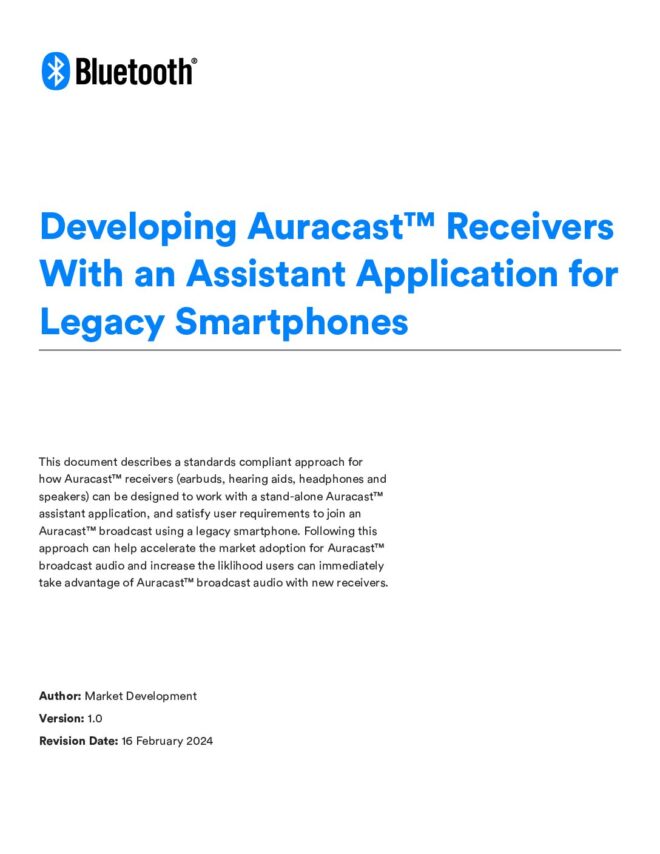
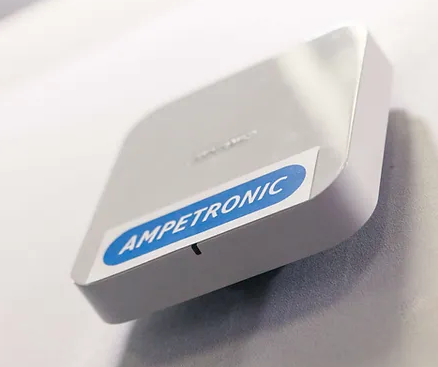
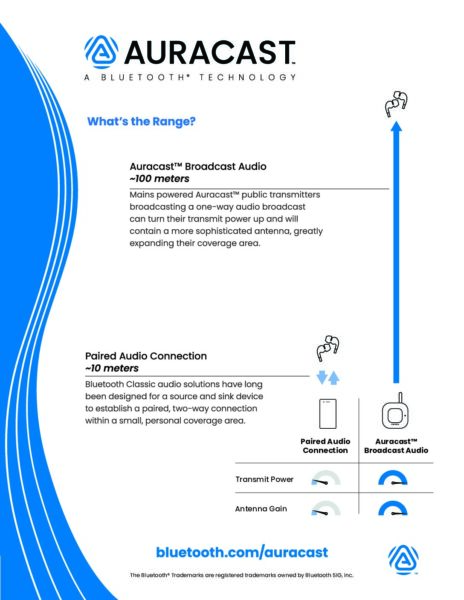
![2312 CES Handout Images FINAL existing pdf 464x600[1]](https://www.bluetooth.com/wp-content/uploads/2024/01/2312_CES_Handout-Images_FINAL-existing-pdf-464x6001-1.jpg)
![2312 CES Handout Images FINAL unlimited pdf 464x600[1]](https://www.bluetooth.com/wp-content/uploads/2024/01/2312_CES_Handout-Images_FINAL-unlimited-pdf-464x6001-1.jpg)
